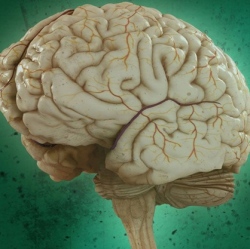
Monash University researchers have discovered that two naturally occurring hormones stimulate neurons in the brain’s hypothalamus, causing them to send signals through the nervous system that promote the conversion of white fat into brown fat. This leads to burning off excess fat.
The findings, published Thursday (Jan. 15) in the journal Cell, give new insights into how the brain regulates body fat, and may lead to more effective ways to lose weight and prevent obesity by promoting the conversion of white fat to brown fat. This molecular mechanism depends on the combined action of leptin, an appetite suppressant generated in fat cells, and insulin, produced in the pancreas in response to rising levels of glucose in the blood.
“These hormones give the brain a comprehensive picture of the fatness of the body,” said lead researcher Professor Tony Tiganis from the Department of Biochemistry and Molecular Biology. Leptin measures the level of existing fat reserves, the more fat, the more leptin, and insulin provides a measure of future fat reserves because glucose levels rise when we eat, Tiganis said.
Fat in adult humans is typically stored in adipocyte cells in white fat. But around the neck and shoulders, there is a second form of fat made of brown adipocytes. Rather than storing fat, these cells can be induced to burn it off.
The research team discovered leptin and insulin interact with proopiomelanocortin (POMC) neurons in the hypothalmus, which links the nervous system to the endocrine system via the pituitary gland. In laboratory work, researchers were able to show that the process is regulated in these neurons by enzymes known as phosphatases, which inhibit the actions of each of the hormones. When the levels of these inhibitors were reduced, the browning and burning of fat increased.
Professor Tiganis said this fundamental process normally serves to maintain body weight, but in poor-diet-induced obesity this mechanism goes awry. “Eventually, we think we may be able to help people lose weight by targeting these two enzymes. Turning white fat into brown fat is a very exciting new approach to developing weight loss agents. But it is not an easy task, and any potential therapy is a long way off,” Professor Tiganis said.
